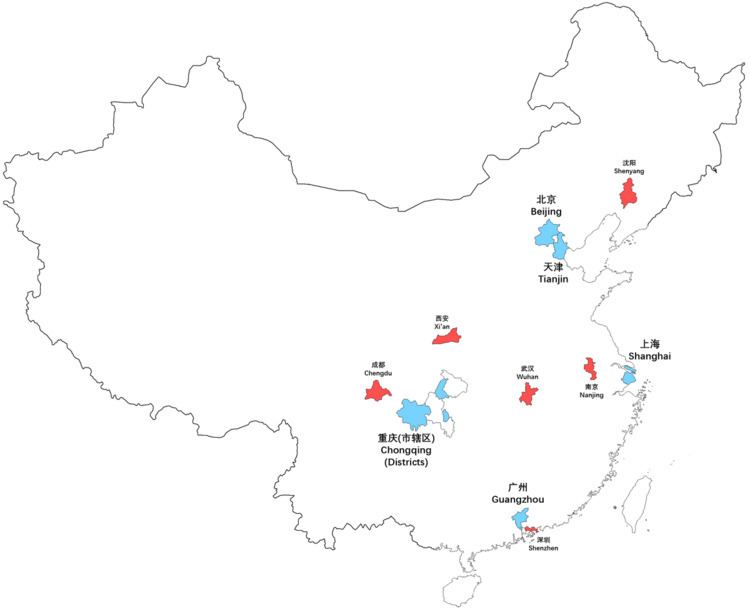Simplified Chinese 国家中心城市 | Traditional Chinese 國家中心城市 | |
 | ||
Hanyu Pinyin | ||
National Central City (simplified Chinese: 国家中心城市; traditional Chinese: 國家中心城市; pinyin: Guójiā Zhōngxīn Chéngshì) was a concept proposed by the Ministry of Housing and Urban-Rural Development of the People's Republic of China in 2005 as a first step in reforming urbanization in China. The National Central Cities are described as a group of cities in charge of leading, developing, and performing tasks in political, economic, and cultural aspects.
In February 2010, the ministry issued the "National Urban System Plan" and designated five major cities, Beijing and Tianjin in the Bohai Economic Rim, Shanghai in the Yangtze River Delta Economic Zone, Guangzhou in the Pearl River Delta Economic Zone, and Chongqing in the West Triangle Economic Zone as the National Central Cities.
The National Central Cities sphere of influence have great impact around the surrounding cities on modernizing and integrating services in fields such as infrastructure, finance, public education, social welfare, sanitation, business licensing and urban planning. The ministry also makes mention of the Regional Central Cities including Shenzhen, Nanjing, Wuhan, Shenyang, and Xi'an.
